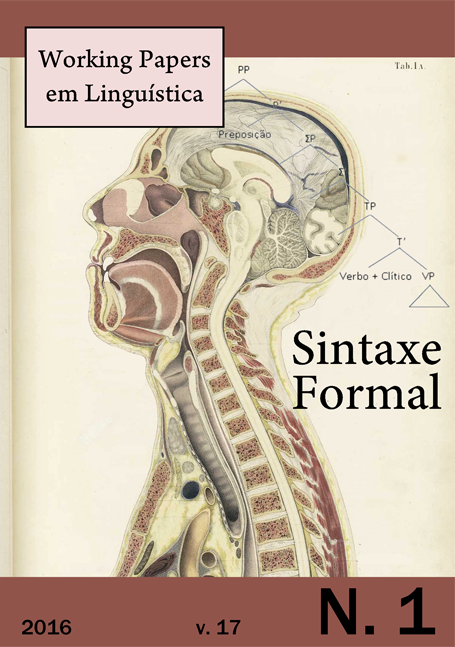The importance of the ‘semantic gender’ feature in the null object in brazilian portuguese
DOI:
https://doi.org/10.5007/1984-8420.2016v17n1p64Abstract
http://dx.doi.org/10.5007/1984-8420.2016v17n1p64
Since the XIX century (at least), the use of third person accusative clitic (o, a) in Brazilian Portuguese (BP) has yielded to two strategies, (a) the use of tonic pronouns ele, ela or (b) the use of a null object. Assuming Creus e Menuzzi’s (2004) hypothesis (i.e. the relevant feature that triggers the null object strategy is the semantic gender of the referent), we will argue here that there is a marked and an unmarked strategy (the null object being the unmarked one). By a reanalysis of tests originally proposed by C&M, we propose and apply new tests, arguing that the marked strategy is the use of a pronoun and the unmarked strategy is the null object, and the semantic feature of the referent is relevant to each strategy.
Downloads
Published
Issue
Section
License
Copyrights belong to the authors, who allow the Working Papers em Linguística journal to publish their work. Total or partial reproduction requires the Editorial Board's authorization. Names and adresses in this website are exclusively used for the journal's purposes and are not available for other purposes and/or third parties.
![]()
This publication is licensed under Creative Commons - Attribution-NonCommercial - 4.0 International.


